Before getting into complex solutions, let’s look at a few quick fixes that may solve the Chrome black screen problem right away.
- Restart the Chrome browser via the Windows Task Manager
- Disable Chrome extensions.
- Turn off graphics acceleration in Chrome Settings.
- Reset Chrome flags.
Google Chrome is probably the most reliable web browser, but it can give you headaches sometimes. I recently had a very unpleasant experience using Chrome as it loaded a black screen. Whenever I switched to a new or an open tab, the browser window stayed blank for a while before loading page content. I wasn’t sure whether it was due to a bad update, a rogue extension, corrupt browser data, or something else. Having tried several workarounds, I could fix the Google Chrome white or black screen problem.
1. Restart Chrome using Task Manager
Sometimes Chrome’s interface fails to load properly. Forcing a complete shutdown and restarting the browser via the Task Manager can fix the problem.
- Press Ctrl + Shift + Esc to open Task Manager on Windows.
- In the Processes tab, find Google Chrome and right-click the process.
- Select the End task option from the context menu.
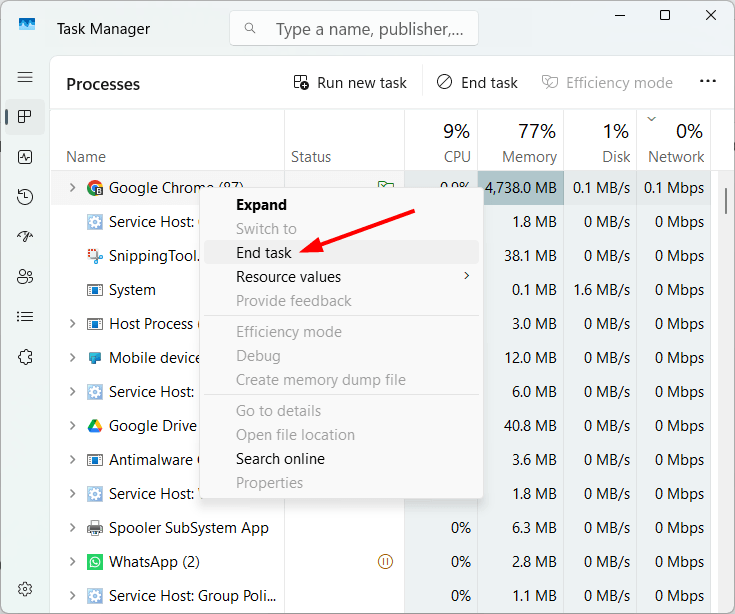
- Launch Chrome again from your desktop or Start menu.
This trick works because it clears any temporary glitches that prevent proper rendering.
Don’t Miss: How to Boost Download Speed in Chrome
2. Temporarily Disable Extensions
Browser extensions are among the most common culprits behind various Chrome issues. They might become incompatible with Chrome updates, conflict with the browser, and create display problems.
- Open Chrome and type
chrome://extensionsin the address bar and press Enter to see your extensions page. Alternatively, click the 3-dot icon in the top-right corner, select Extensions > Manage Extensions. - Toggle off all extensions by clicking the blue switches.
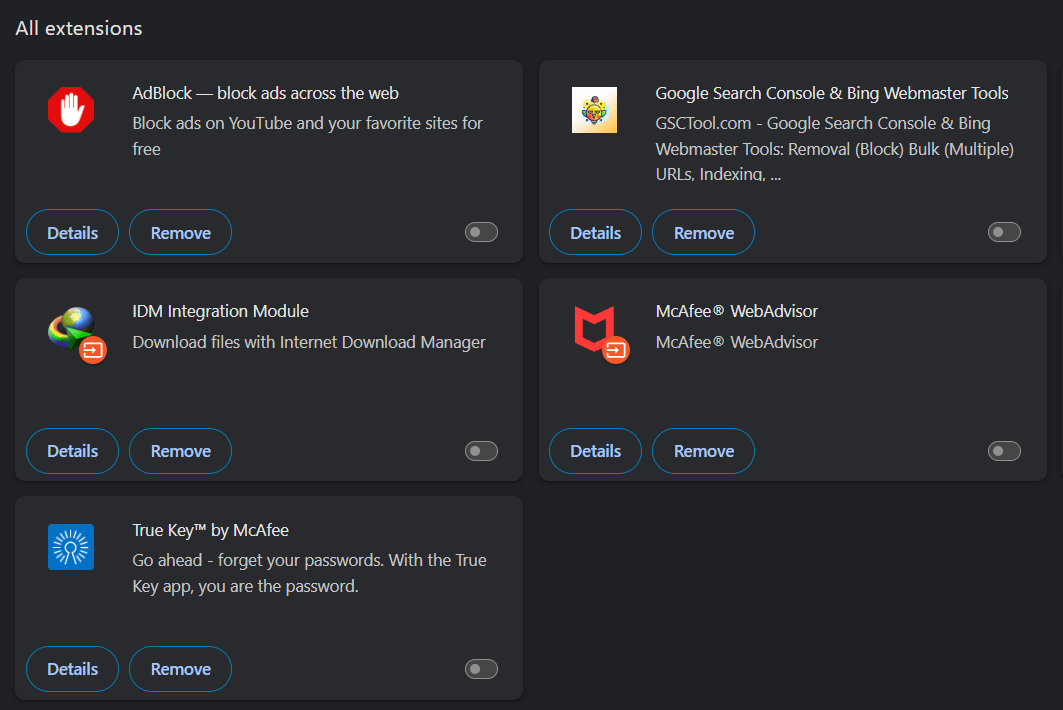
- Restart Chrome and check if the black screen issue is gone.
If turning off all extensions fixes your issue, you’ve found the source of the problem. To identify the specific troublemaker:
- Re-enable your extensions one at a time.
- Restart Chrome after enabling each extension.
- When the black screen returns, you’ve found the problematic extension.
- Remove the extension.
Abandoned or poorly coded extensions eventually cause browser problems, including display issues.
3. Reset Chrome Flags
Chrome flags are experimental features, so they remain hidden by default. Unwittingly enabling or disabling a flag might make Chrome behave unexpectedly. If you’re encountering the black screen issue, it might be caused by a recently enabled flag. Follow the quick steps to reset all flags to their default settings.
- Type or paste
chrome://flags/in Chrome’s address bar and press Enter. - Click the Reset All button in the top-right corner.
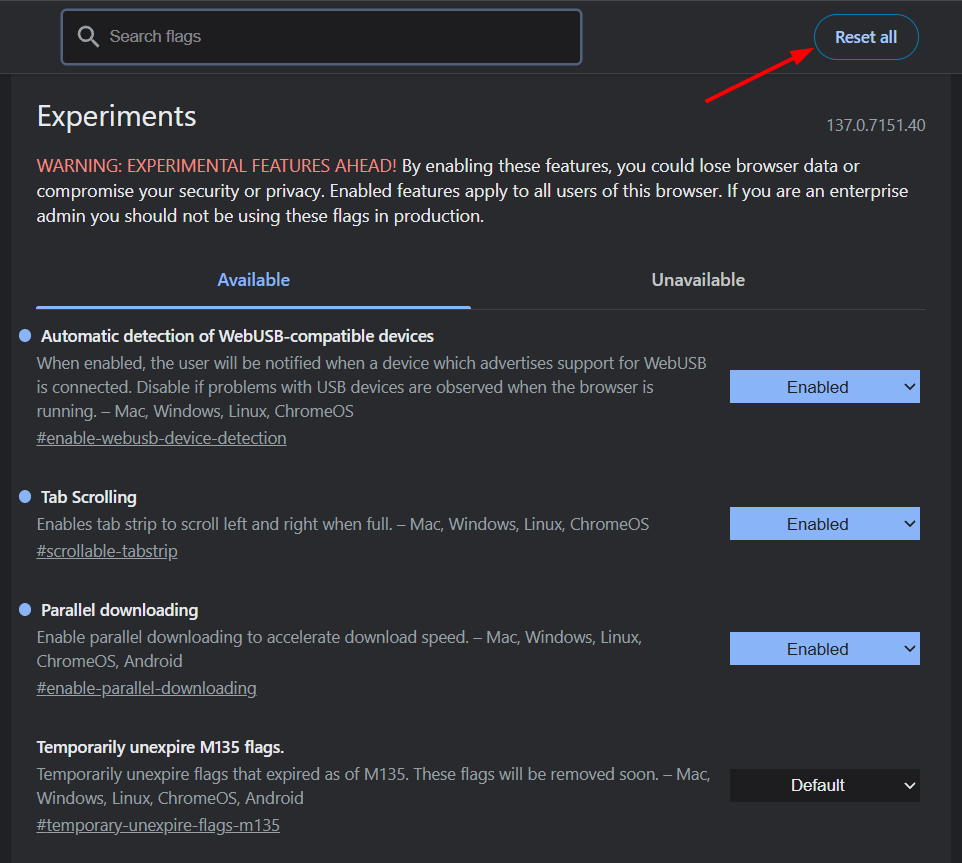
Now, close Chrome and relaunch it to check if the back screen issue is resolved.
5. Turn Off Graphics Acceleration
When graphics acceleration is enabled, Chrome uses the GPU instead of the CPU to render web pages. This is a great feature as it relieves the CPU, but sometimes it may cause issues like blank pages. To troubleshoot the problem, try disabling graphics acceleration in Chrome so that the browser relies on the CPU for tasks like rendering web pages, videos, and animations.
Here’s how to turn off the feature:
- Click the 3-dot icon in the top-right corner of the Chrome window and select System. Alternatively, enter
chrome://settings/systemin the browser’s address bar and hit Enter. - Click the toggle next to the Use graphics acceleration when available option.
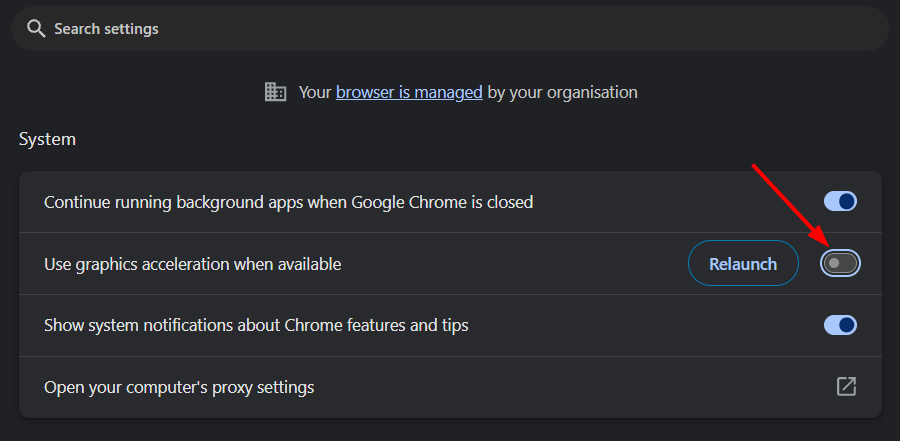
- Finally, click the Relaunch option.
6. Update your Graphics Card Driver
Outdated or corrupted graphics drivers may also trigger the black screen issue in Chrome. Try updating your graphics drivers to ensure Chrome can properly use your system’s display capabilities.
- Press Windows key + X, or right-click the Windows icon and select Device Manager.
- Expand the Display adapters section.
- Right-click your graphics card and select Update driver.

- Choose to search automatically for drivers and update, if available.
Relaunch Chrome and check if the black screen issue persists.
7. Update Chrome to the Latest Version
By default, Google Chrome updates itself automatically. However, if for some reason, you’ve an outdated version of the browser installed on your PC, update it to the latest version.
- Click the 3-dot icon and select Settings.
- Select About Chrome and check if you’ve the latest version installed.
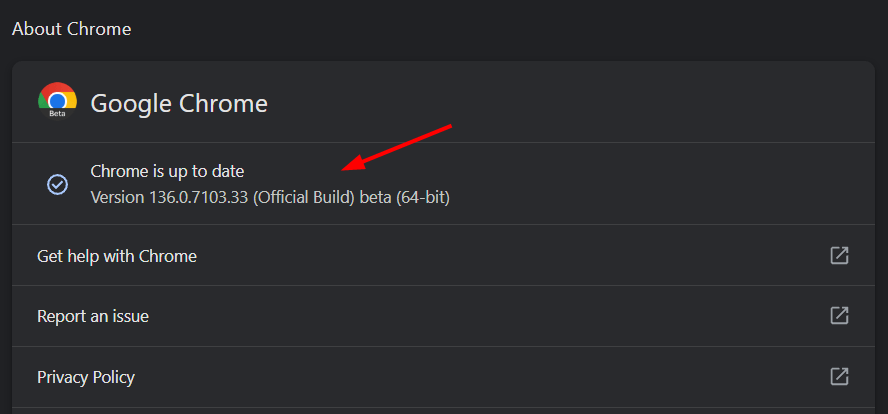
8. Clear Browsing Data
Google Chrome accumulates cache and data over time, which weighs down its performance. Dumped or corrupt browsing data might also cause the black screen problem. Clearing this backlog can solve the issue:
- Click the 3-dots in the top-right corner, then Delete browsing data.
- Select All time from the time range dropdown.
- Check Cached images and files.
- Click Delete data.

That’s it! Now, relaunch Chrome.
9. Reset Chrome to Default Settings
Resetting Chrome to its default state often fixes browser issues. A Chrome reset will change your default search engine, homepage settings, new tab page, pinned tabs, content settings, cookies, site data, and disable all extensions and themes.. The good news is that your bookmarks, passwords, and history remain intact during a reset.
- Open Chrome’s menu by clicking the 3 dots in the top-right corner.
- Select Settings from the dropdown menu.
- Select Reset Settings.
- Click the Reset button in the confirmation dialog.
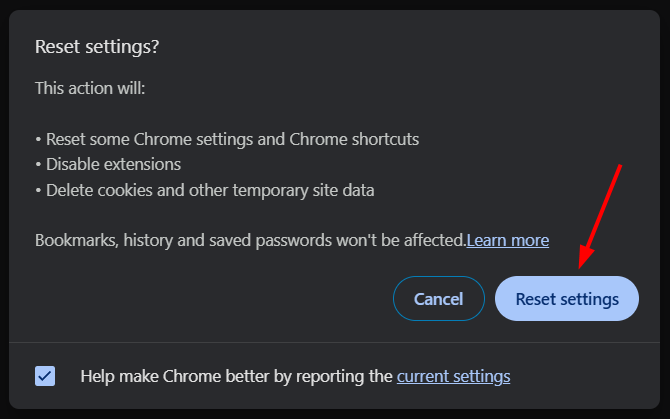
10. Uninstall and reinstall Google Chrome
If nothing else helps solve the black screen issue in Chrome, completely removing and reinstalling the browser should fix the problem.
- Open Windows Settings through the gear icon in the Start Menu
- Navigate to Apps and locate Chrome.
- Select Chrome and click Uninstall.
- For a more thorough cleaning, do the following:
- Paste “%localappdata%\Google” into the File Explorer address bar and press Enter.
- Rename the ‘Chrome‘ folder to ‘ChromeOld‘.
- Download the latest Chrome version.
- Install the fresh copy.
Remember that uninstalling Chrome will wipe out your saved passwords unless you’ve synced your data with a Google account.
